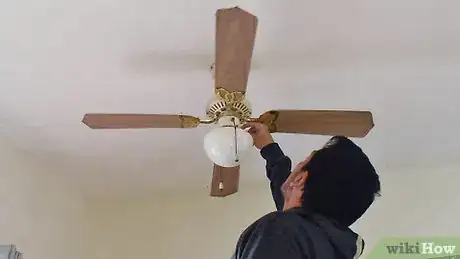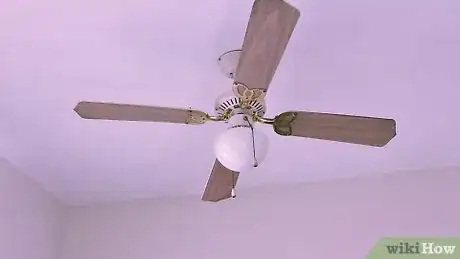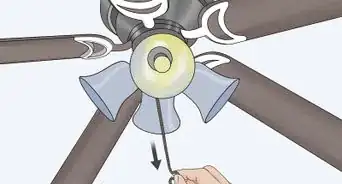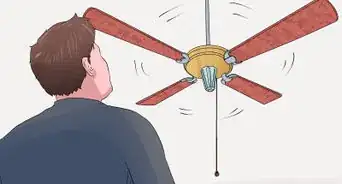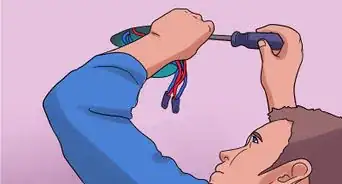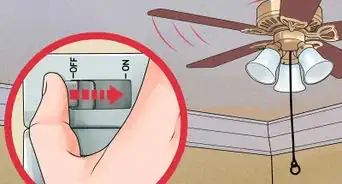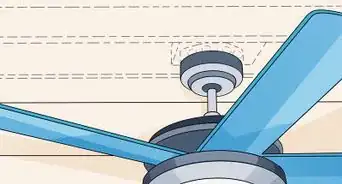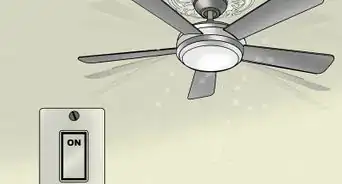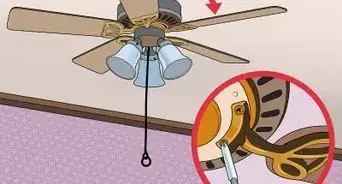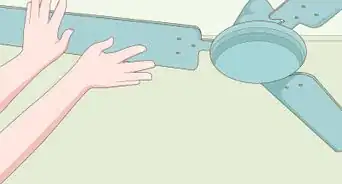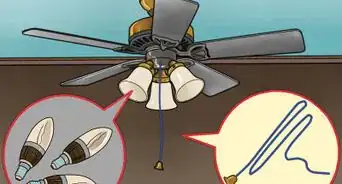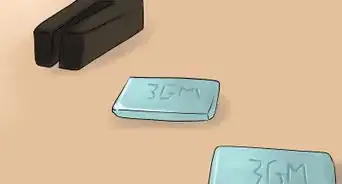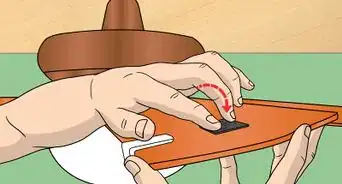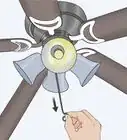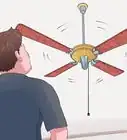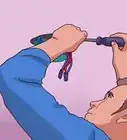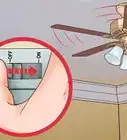This article was co-authored by Daniel Stoescu. Daniel Stoescu is a Master Electrician and the Owner and Operator of Home Tech Solutions, LLC in Hampton, Virginia. With over a decade of experience, Daniel specializes in wiring residential, commercial, and light industrial structures. The Home Tech Solutions team has over four decades of combined experience and offers comprehensive solutions for residential electrical needs.
This article has been viewed 57,341 times.
Depending on the time of year, you'll want to change the direction of your ceiling fan so that it blows cool air around the room on a hot day, or distributes warm air on a cool day. With the simple flip of a switch or tug of a chain, you can start saving costs on your heating and air conditioning bills. Remember to keep the blades nice and clean to keep the fan working at its best!
Steps
Choosing the Right Direction for Different Seasons
-
1Have your fan run counterclockwise in the summertime. Running it counterclockwise will create a downward breeze that will help to cool down your room.[1] This can further help to save money on running the air conditioning, and potentially cut your summer electricity bill in half.[2]
- The downward breeze caused by running your fan counterclockwise helps to evaporate the moisture off your skin during hot weather. You can keep yourself cool without an air conditioner this way.[3]
-
2Run your fan clockwise during the winter. When it's cold, warm air rises to the ceiling and stays there unless you use a fan to disperse it around. Running your fan clockwise will direct the breeze upward instead, spreading the heat more evenly around the room.[4]
- Having high vaulted ceilings, or a fireplace or stove in the room with the fan makes this particularly effective.
Advertisement -
3Use a fan with fewer blades to generate more air flow. Most fans will have 5 blades, but those with 3 or 4 will actually help to create more movement of air around the space. It will be the case for either direction you can run the fan, helping to better cool down or warm up a room.[5]
- As long as you let the same amount of power reach the new fan, it should work just as well as any 5-bladed fan. If your new fan has a smaller motor, though, it may now work as efficiently even with fewer blades.
- Keep in mind that more airflow generates more noise.
Changing Your Ceiling Fan's Direction
-
1Turn your fan off. You won't be able to get at the fan while the blades are moving. Avoid risking injury to yourself, and make sure the fan is completely turned off before you start to approach it.[6]
- Make sure the blades have stopped moving altogether before you get close.
-
2Get a step stool or ladder to reach your fan's motor. If you need to flip the switch located on the fan itself, use a sturdy ladder to reach up to where the switch is located. Get a friend to help hold the ladder steady to keep you safe as you climb.
- Always follow ladder safety. Make sure all its feet are flat on the ground before you climb on it, secure on a surface where they won't slip. Don't climb to the highest point on the ladder.
-
3Flip the switch on the side of the fan. Located on the motor of most fan units just above the blades will be a switch. Flip it to reverse the direction of the fan to blow the air either up or down as needed.[7]
- If your fan doesn't have a switch on the motor, the direction reverse may be handled in a different way, such as a button on the fan's remote control. Other models might have a hanging chain that will have to be pulled to change the fan's direction, saving you the hassle of needing a ladder.
References
- ↑ https://www.realsimple.com/home-organizing/home-improvement/maintenance-repairs/how-to-change-ceiling-fan-direction
- ↑ https://www.southernliving.com/home/ceiling-fan-direction
- ↑ https://www.youtube.com/watch?v=NMHZBqVN3sA&feature=youtu.be&t=18
- ↑ https://www.southernliving.com/home/ceiling-fan-direction
- ↑ https://www.southernliving.com/home/ceiling-fan-direction
- ↑ https://www.youtube.com/watch?v=NMHZBqVN3sA&feature=youtu.be&t=36
- ↑ https://greenlivingideas.com/2015/06/26/how-and-why-to-change-the-direction-of-your-ceiling-fans-in-summer-and-winter/
About This Article
Changing the direction of your ceiling fan can actually make it hotter or colder in your room. Having the fan run counterclockwise will create a downward breeze that cools the room off, while running the fan clockwise will create an upward breeze that disperses hot air throughout the room and makes it warmer. To change the direction of your ceiling fan, start by turning the fan off if it’s not already. Then, use a stool or step ladder to access the switch on the side of the fan. Flip the switch to the right setting depending on which direction you want it to spin in. Remember to change the direction of your ceiling fan every summer and winter to help you save money on heating and cooling.
